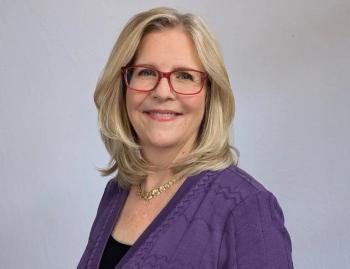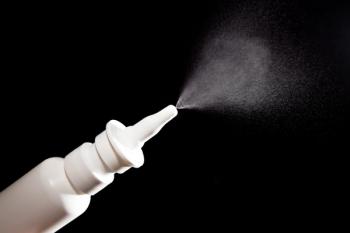
- Psychiatric Times Vol 23 No 7
- Volume 23
- Issue 7
STAR*D ‘Diligent Delivery of Care’ Model Yields Remission Gains
Half of patients with nonpsychotic major depressive disorder can achieve symptomatic remission with no more than two treatments.
Half of patients with nonpsychotic major depressive disorder can achieve symptomatic remission with no more than 2 treatments, provided those treatments are diligently delivered with careful adjustments of medication doses, according to A. John Rush, MD, principal investigator of the Sequenced Treatment Alternatives to Relieve Depression (STAR*D) trial.
Speaking at a recent press teleconference organized by the National Institute of Mental Health (NIMH),1 Rush called the results good news, considering that the outpatients who participated in the study, ranging in age from 18 to 75 years, were real world patients.
A 50% remission rate is extraordinarily good, given the nature of these disorders, said Rush, who is vice chairman of clinical sciences and professor of psychiatry at the University of Texas Southwestern Medical Center, Dallas. These individuals have had about 16 years of illness and have had an average of more than 2 years in a current episode; two thirds have other psychiatric conditions, such as generalized anxiety disorder, panic disorder, or post-traumatic stress disorder; and about two thirds have concomitant current general medical problems. All of these additional illness burdens reduce the probability of achieving remission and may prolong the time to get to remission.
NIMH funded the 6-year, $35- million effectiveness STAR*D trial to help address the public health challenge of depression, said NIMH director Thomas Insel, MD. Government and research statistics indicate that depression affects 6.7% of the adult US population, begins early in life, is the leading cause of disability in Americans aged between 15 and 44 years, is a major factor in suicides, and costs the nation an estimated $83.1 billion annually (year 2000 estimates), which includes $26.1 billion in direct treatment costs and $57 billion in reduced productivity, absenteeism, and lost earnings as a result of suicide.2
Even though antidepressants are one of the most commonly prescribed medications in the United States, depression has not gone away, Insel noted. Why is this the case?
The easy answer is that roughly half the people with depression do not get treatment, and of those who do get treatment, only about 40% receive an evidence-based treatment, such as [an] adequate dose of an SSRI [selective serotonin reuptake inhibitor] for an adequate period of time, he said. The more difficult answer to that question is that even those who get optimal treatment may not get well. We know that in a 12-week trial with an adequate dose of an antidepressant, about half get better and one third get well; that leaves two thirds still needing another treatment.
Insel was alluding to the Level 1 results of the STAR*D trial.3 At Level 1, participants took the SSRI citalopram (Celexa), and the response rates were comparable across 23 psychiatric and 18 primary care treatment sites. Out of an analyzable sample of 2876 outpatients, about one third of the participants reached remission (28% per the 17-item Hamilton Depression Rating Scale [HAM-D] and 33% per the Quick Inventory of Depressive Symptomatology, Self-Report [QIDSSR]). 3 If they chose to stay in the study, they continued on citalopram and entered a citalopram follow-up phase.
For remission, the mean dose of citalopram (41.8 mg/d) was higher and the mean duration of treatment (47 days with 5.5 visits) was longer than might have been expected on the basis of current clinical practice.4 In Level 1, 20% of the patients (592) exited the study.
Level 2
Patients who did not achieve remission or who could not tolerate citalopram were invited to participate in Level 2 of the trial, which offered 7 different treatments options for up to 14 weeks. Four options switched the study participants to sustained-release bupropion (Wellbutrin SR; maximum dosage, 400 mg/d), sertraline (Zoloft; maximum dosage, 200 mg/d), extended-release venlafaxine (Effexor XR; maximum dosage, 375 mg/d), or cognitive therapy (CT). Three options augmented citalopram by adding either sustainedrelease bupropion (mean ending dosage, 267.5 mg/d), buspirone (BuSpar; mean ending dosage, 40.9 mg/d), or CT. The results for the medication trials are reported in 2 articles recently published in the New England Journal of Medicine.5,6 The CT results, as both a switch and add-on alternative, are expected to be published in the fall.
A total of 1439 patients entered Level 2. About 1 in 4 of the 727 people who participated in the switch study became symptom-free, which was about the same in each of the 3 medication groups.
No one medication was clearly better than another, even though these treatments . . . have different pharmacologic effects. So, which treatment is used may be less important than that the drugs be used diligently and appropriately with proper dose adjustments and the measurement of symptoms and side effects, said Rush. Patients and doctors should note that they should not give up treatment after 4 weeks, which is currently common practice, because the study showed that about one third of those who ultimately did benefit either in terms of response or remission did so after 4 and even after 6 weeks. Our trial suggests that longer treatment with current medications would be beneficial.
In the journal article on the switch portion of the study, Rush and colleagues noted that contrary to the belief that intolerance of one SSRI predicts intolerance of another SSRI, sertraline was tolerated as well as sustained-release bupropion, even though 56% of the patients in this trial could not tolerate citalopram. Thus, intolerance to or the lack of efficacy of one SSRI seems not to imply intolerance or lack of efficacy of another SSRI. These results indicate that both withinclass and out-of-class medication switches are reasonable choices.5
About 1 in 3 of the 565 participants in the augmentation study achieved remission when a second medication was added to citalopram. The sustainedrelease bupropion group and the buspirone group had similar rates of remission, as assessed using the 17-item HAM-D and the 16-item QIDS-SR, but bupropion was associated with a greater reduction (from baseline to the end of the study) in QIDS-SR scores than was buspirone. Compared with buspirone, bupropion was also associated with fewer side effects and adverse effects.6
Study participants who still did not achieve remission in Level 2 had the option of completing up to 2 additional levels of treatment. Options at Level 3 were mirtazapine (Remeron) or nortriptyline (Aventyl, Pamelor) as monotherapies or augmentation with lithium (Eskalith, Lithobid) or a thyroid hormone (T3). Participants in Level 4 could switch to tranylcypromine (Parnate) or to a combination of extended- release venlafaxine and mirtazapine. Results from Levels 3 and 4 of the STAR*D trial will be published later this year.
Delivery of care
An important and implicit aspect of the STAR*D trial, according to Insel, was the diligent delivery of care.
People who entered this very large trial received a management of care approach that is really quite different from what many people in the United States receive when they see a primary care physician or even a psychiatrist for depression, Insel said. This trial included a depression care specialist who was, in some ways, a coordinator of how care was delivered and who would make sure there was very careful monitoring of side effects. There was also a relentless attempt to optimize the dose. This is really an important part of this treatment. . . . It is changing the way in which people with depression get care in a very proactive way.
When discussing the quality of care delivered, Rush said the investigators came to a Goldilocks' decisionnot too hot, not too cold, just right. They didn't want to use standard, routine care, because too often it involves relatively infrequent treatment visits and does not include assessment using careful interviewing and rating scales. In addition, there is widespread variability among clinicians as to when to raise medication doses and by how much, he said.
In the STAR*D trial, the depression care specialist guided clinicians in the application of measurement-based care, including the measurement of symptoms and side effects at each treatment visit and the use of a treatment manual that described when and how to modify medication doses based on the measures.3
Take-home messages
There are 3 take-home messages from STAR*D that are relevant to clinical practice, according to Rush. First, the duration of a trial of a medication to determine whether it is going to be effective must exceed 4 weeks.
Do not make that judgment until you have hit 6 to 8 weeks, he said. Second, in making the judgment about the efficacy of a particular medication, it is extremely wise to use tools, not just a quick interview where you ask the patient, 'Are you feeling a little or a lot better?'
Many of those tools are available on the STAR*D Web site, including the QIDS-SR-16, in both English and Spanish; the Frequency, Intensity, and Burden of Side Effects Rating (FIBSER) in both English and Spanish; and the Patient-Rated Inventory of Side Effects, which is used in combination with the FIBSER.7
The tools are self-report ratings done by the patient, so they take no time away from the physician. They make measurements much more precise and make the choices to proceed, stop, or switch the medication much clearer, Rush said.
The third take-home message, according to Rush, is that physicians can now say to patients, If you stay in treatment for 2 steps, you have a greater than 50% chance of not just getting better but getting rid of the depression. Since depression sucks the life-force out of patients and can even cause them to avoid getting into or staying in treatment if they encounter some challenge, the assurance of possible remission can be motivating.
Much of what was learned in the STAR*D trial will need to be considered in any revision of clinical practice guidelines, Rush told Psychiatric Times.
The future
In an editorial accompanying the Level 2 reports in the New England Journal of Medicine, David Rubinow, MD, Assad Meymandi professor and chair of the department of psychiatry at the University of North Carolina, Chapel Hill, said, Much of the promise of the STAR*D trials may be found in the identification of predictors of response to antidepressant therapies--the differences among patients that should permit the design of more specific, individualized treatment.8
On the other hand, he noted, the carefully performed trials were discouraging, in part because the results suggest that at least half of patients with depression do not have a remission.
In a response to Rubinow's statement, Insel said, The glass is half empty in the sense that we need to come up with yet better treatments in the future that increase remission to 100% and do it more quickly.
The challenge, Insel said, is to come up with new classes of medications. That is going to require a better understanding of the pathophysiology of depression. . . . That understanding will enable us to go after new targets. There are some on the horizon; a whole series of compounds are being tried out in our intramural programs, with the hope of finding a response in hours rather than weeks.
References:
References1. National Institute of Mental Health. STAR*D Teleconference. March 20, 2006.
2. Greenberg PE, Kessler RC, Birnbaum HG, et al. The economic burden of depression in the United States: how did it change between 1990 and 2000? J Clin Psychiatry. 2003;64:1465-1475.
3. Trivedi MH, Rush AJ, Wisniewski SR, et al. Evaluation of outcomes with citalopram for depression using measurement-based care in STAR*D: implications for clinical practice. Am J Psychiatry. 2006;163:28-40.
4. Insel TR. Beyond efficacy: the STAR*D trial. Am J Psychiatry. 2006;163:5-7.
5. Rush AJ, Trivedi MH, Wisniewski SR, et al. Bupropion-SR, sertraline, or venlafaxine-XR after failure of SSRIs for depression. N Engl J Med. 2006;354:1231-1242.
6. Trivedi MH, Fava M, Wisniewski SR, et al. Medication augmentation after the failure of SSRIs for depression. N Engl J Med. 2006;354:1243- 1252.
7. STAR*D assessment forms. Available at:
8. Rubinow DR. Treatment strategies after SSRI failuregood news and bad news. N Engl J Med. 2006;354:1305-1307.
Articles in this issue
over 19 years ago
The ABCs of Cognitive-Behavioral Therapy for Schizophreniaover 19 years ago
Treating Paul Celan Poemover 19 years ago
Cognitive Decline in Elderly Predicted by Brain Imagingover 19 years ago
Happy Endingsover 19 years ago
“My Madness Saved Me”: The Madness and Marriage of Virginia Woolfover 19 years ago
Eating Disorders in Schizophreniaover 19 years ago
BasicNeeds: Helping the Mentally Ill Live ProductivelyNewsletter
Receive trusted psychiatric news, expert analysis, and clinical insights — subscribe today to support your practice and your patients.














